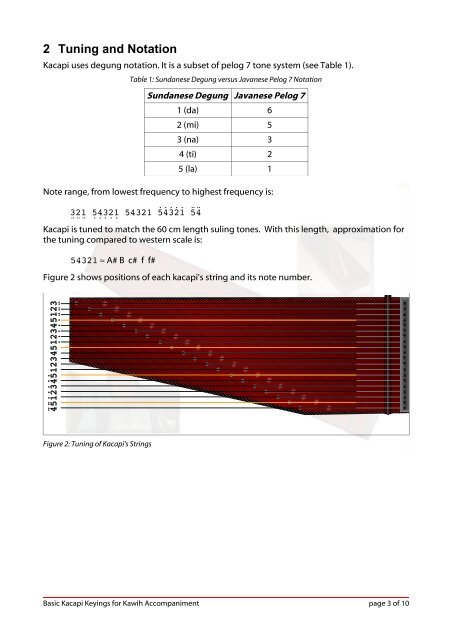Basic Kacapi Keyings for Kawih Accompaniment - Sabilulungan
Basic Kacapi Keyings for Kawih Accompaniment - Sabilulungan
Basic Kacapi Keyings for Kawih Accompaniment - Sabilulungan
You also want an ePaper? Increase the reach of your titles
YUMPU automatically turns print PDFs into web optimized ePapers that Google loves.
2 Tuning and Notation<br />
<strong>Kacapi</strong> uses degung notation. It is a subset of pelog 7 tone system (see Table 1).<br />
Table 1: Sundanese Degung versus Javanese Pelog 7 Notation<br />
Sundanese Degung Javanese Pelog 7<br />
1 (da) 6<br />
2 (mi) 5<br />
3 (na) 3<br />
4 (ti) 2<br />
5 (la) 1<br />
Note range, from lowest frequency to highest frequency is:<br />
838281 trewq 54321 %$#@! 9594<br />
<strong>Kacapi</strong> is tuned to match the 60 cm length suling tones. With this length, approximation <strong>for</strong><br />
the tuning compared to western scale is:<br />
54321 ≈ A# B c# f f#<br />
Figure 2 shows positions of each kacapi's string and its note number.<br />
9495!@#$%12345qwert818283<br />
Figure 2: Tuning of <strong>Kacapi</strong>'s Strings<br />
<strong>Basic</strong> <strong>Kacapi</strong> <strong>Keyings</strong> <strong>for</strong> <strong>Kawih</strong> <strong>Accompaniment</strong> page 3 of 10


